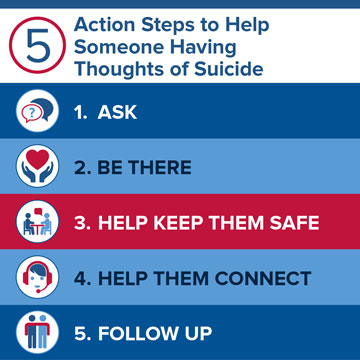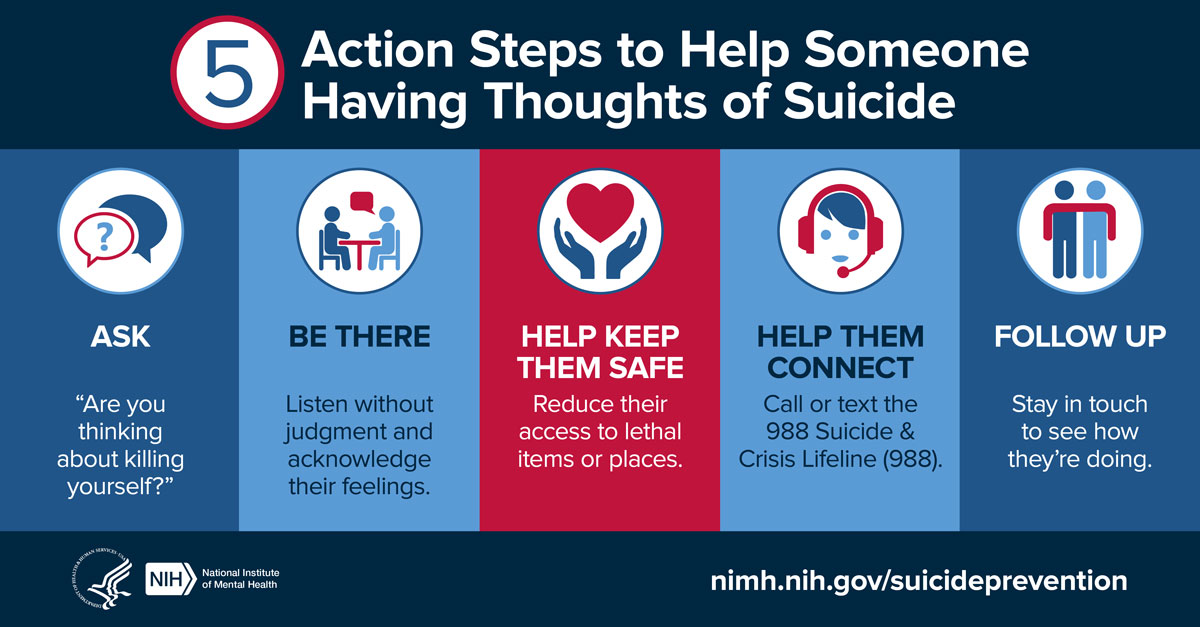5 Action Steps to Help Someone Having Thoughts of Suicide
We can all take steps to help prevent suicide. Knowing the warning signs for suicide and how to get help can save lives.
5 Action Steps
Here are 5 steps you can take to #BeThe1To help someone who is having thoughts of suicide:
- ASK: “Are you thinking about suicide?” It’s not an easy question to ask, but it can help start a conversation. Studies show that asking people if they are suicidal does not increase suicidal behavior or thoughts.
- BE THERE: Listening without judgment is key to learning what the person is thinking and feeling. Research suggests acknowledging and talking about suicide may reduce suicidal thoughts.
- HELP KEEP THEM SAFE: Reducing access to highly lethal items or places can help prevent suicide. Asking the person if they have a plan and making lethal means less available or less deadly can help the person stay safe when suicidal thoughts arise.
- HELP THEM CONNECT: Connecting the person with the 988 Suicide & Crisis Lifeline (call or text 988) and other community resources can give them a safety net when they need it. You can also help them reach out to a trusted family member, friend, spiritual advisor, or mental health professional.
- FOLLOW UP: Staying in touch with the person after they have experienced a crisis or been discharged from care can make a difference. Studies show that supportive, ongoing contact can play an important role in suicide prevention.
Learn more about suicide prevention and the #BeThe1To campaign .
U.S. DEPARTMENT OF HEALTH AND HUMAN SERVICES
National Institutes of Health
NIMH Identifier No. OM 24-4315
Revised 2024
Share the Infographic on Social Media
Find more resources to share on social media.
Reprints
The information in this publication is in the public domain and may be reused or copied without permission. However, you may not reuse or copy images. Please cite the National Institute of Mental Health as the source. Read our copyright policy to learn more about our guidelines for reusing NIMH content.


